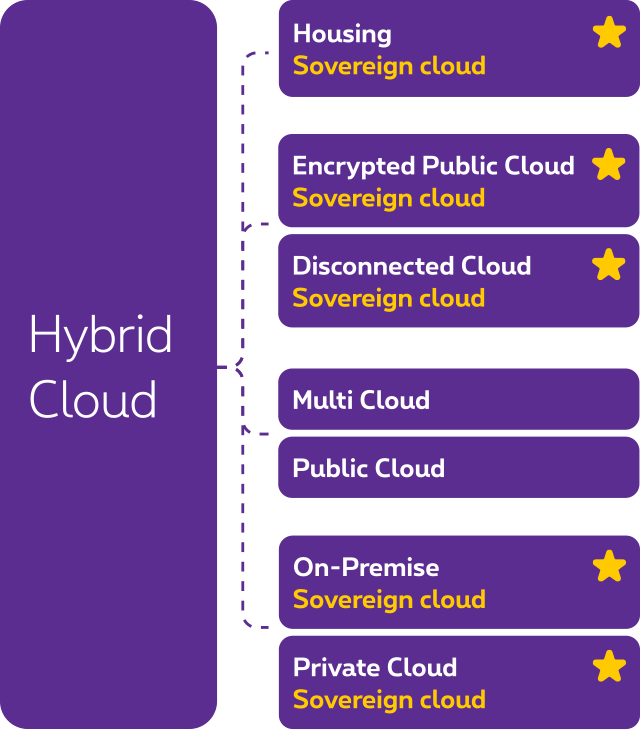Private cloud
The private cloud is the opposite of the public cloud. Here you use a fully protected cloud environment. A private cloud is especially suitable for business-critical applications. Hosting is possible via the infrastructure of your own company or in one of the Proximus NXT data centers.
Public cloud
A public cloud, such as Microsoft Azure, Google Cloud Platform (GCP) or Amazon Web Services (AWS), relies on a shared infrastructure, without you or your customers noticing it. You do not need your own hardware as your cloud provider guarantees maintenance and updates.


